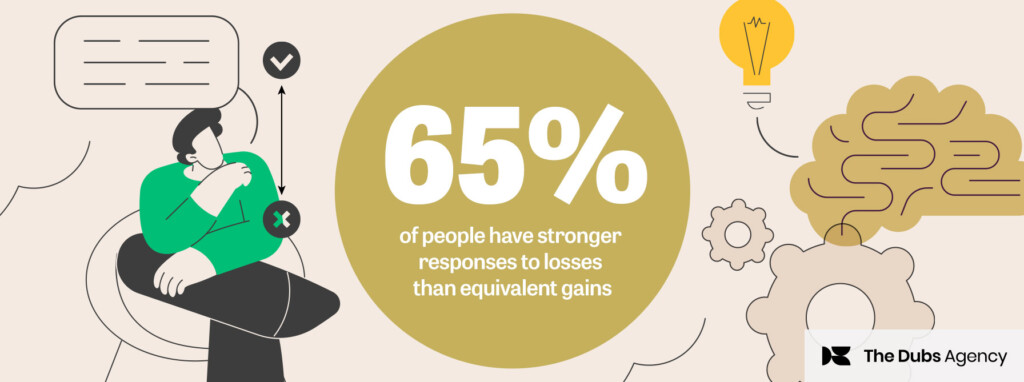The Spiderman comic was right. With great power there must also come – great responsibility. But before you say: that doesn’t apply to me, I’m a financial marketer not a superhero, I don’t have the thighs for tights… actually, it applies across the board. For instance, if you’re a financial institution holding a wealth of resources, expert knowledge, research and data, you’re in the power seat. You’re the financial marketing equivalent of the man who can spin the web and swing from tall buildings. And with that power comes a responsibility to help people.
In most financial services organisations, however, the motivation for building a powerhouse of expertise and information is generally to grow your business, maximise your profits, influence your audience and beat the competition. To get more power, if possible. And that’s as it should be… but it’s not enough.
Why financial marketers need to own the tights, and your responsibility
Today we’re all trading in a trust-challenged consumer environment, and many customers feel let down, suspicious – if not totally ripped off. Rebuilding trust with customers is imperative. Being worthy of trust, combined with being genuinely customer-centric is increasingly one of the most powerful competitive advantages you can own.
But taking it a step further, putting aside the competitive advantage for a moment, taking off the business-focused, product-obsessed lens – what do you see? Is your content marketing really benefitting the customer? Is it educating them so they’re more informed and financially in control? Will it lead to a better quality of life, less financial pressure, less anxiety about the future, a happier retirement?
Is your content marketing really benefitting the customer?
Or are you just selling a brand trust “story” alongside this season’s priority products overlaid with a marketing veneer that makes it sound like it’s helpful?
The power that comes from investing
Recently someone pointed me to an article titled ‘Why I work in asset management’ by investment writer and ‘Capital Raiser’ James Eagle. In it, James explains how a book gave him the inspiration to join the asset management industry. That book is ‘The Intelligent Investor’ by Benjamin Graham and incidentally, James isn’t the only admirer of this tome. Warren Buffet apparently called it “By far the best book on investing ever written”.
What the book inspired Eagle to do was to “be part of the action” and to challenge current issues. The three hottest topics Eagle identifies are saving for retirement, university fees and the escalating cost of housing. He sees investing as one way through these financial blockages.
“I want to help investors by making them more knowledgeable about the economy, the markets and investing in general,” Eagle says. “It’s a relationship built on trust and the understanding of their needs and worries.”
Using the Spiderman mindset, asset managers are holding a lot of power in a giant industry. They have a responsibility to their client institutions and individuals, not just to grow their portfolios and mitigate risk, but to make sure they understand the role investing can play in people’s lives.
Of course, it’s not just the clients of asset managers who need help.
The financial literacy crisis
ASIC’s Financial Capability website says only 35% of Australians know the exact value of their super, only 40% understand the concept of diversification and only 59% pay their credit card balance in full each month.
For that matter, 40% of American families don’t have $400 in available savings to pay for unplanned or emergency expenses without borrowing or selling a possession. 11.5 million people in the UK don’t have even £100 in savings, and 17m feel that nothing they do will make a difference to their financial situation. In Singapore, 34% of people don’t invest and 73% are not on track with their retirement plans.
It’s a world-wide, first-world problem. The UK’s Money & Pensions Service wrote a report that asked the question: what can retail banking do to build financial capability? They’re asking the sector to take a much more proactive, holistic approach including building financial capability into goods and services.
The report cites an example of a product being trialled by Lloyd’s Bank. The ‘Repay and Save’ service is for customers who’ve fallen into arrears. It sets up a repayment plan to make up missed payments and once they’re repaid, customers are transitioned into building a rainy-day savings buffer with monthly payments continuing to go into a savings account.
Financial marketing – doing your bit
Content is an obvious tool and it starts with something as simple as speaking in the language of your audience and using terms they understand.
Real-world initiatives have proven useful in the past, like the ING-Girls Inc Investment Challenge that brought together teams of American girls aged 12 to 18 to learn the fundamentals of sound investing, get hands-on investing experience and keep their gains in the form of college scholarships.
The Bank of England’s EconoME programme kicked off in 2018 with a mission to educate young people on how different parts of the economy work together, so they can take more control over their finances and help themselves in the future. Also in the UK, Barclay’s LifeSkills and their Money Management guides teach young (and older) people about managing money, from understanding payslips to your credit score.
In Australia, ANZ’s MoneyMinded resource is made up of interactive activities available to groups and individuals. MoneyMinded is also available through face-to-face workshops run by various community organisations. As part of the service, ANZ promises not to promote their products or services.
First and foremost, content needs to lose the element of corporate self-interest.
Customers are stakeholders too
As we head towards a world where financial institutions acknowledge a responsibility not just to their shareholders, but to other stakeholders in their businesses – including employees and customers, they’ll need to spin their webs for the betterment of humans. We’re essentially talking about a public service, giving people enough education to be confident in their decisions.
If the idea of offering a public service is jarring, how about this: reducing customers’ anxiety around money – a key aspect of financial capability – is associated with increased Net Promoter Scores. Bain & Company looked at the elements that have the greatest impact on Net Promoter Score, and reducing anxiety is the third-highest for increasing loyalty in banking.
Your Spidey senses should be well and truly tingling.
Related articles
- Create useful finance content that jumps off the shelf
- Student Super: addressing the lost decade
- Financial literacy: consumers look to banks for help
Image: Marvel









